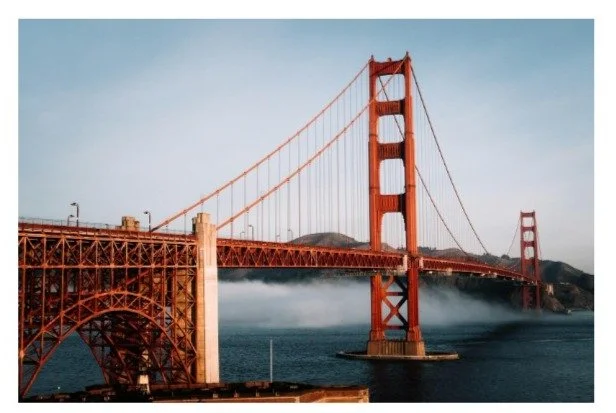Choosing the Right Menu Holder: Style Meets Functionality
Every aspect matters in running a restaurant, including the small detail of choosing the menu holder. From a cursory viewpoint, the menu holder seems insignificant, but customers' perceptions depend significantly on selecting the proper holder. Menu holder fulfill various duties by attracting customers and showing company branding, which develops the dining atmosphere's characteristics for customers.
Your selection of a menu holder represents more than functional support because it communicates directly to customers. How your clients perceive your establishment and the dining atmosphere they experience depends on food presentation, while the initial dining encounter plays a vital role in the formation of their impressions. Customers start making judgments from their initial observation because the menu holder stands out as a crucial visual component.
Understanding Your Restaurant’s Needs
Selecting the proper menu holder for your restaurant starts with evaluating your exclusive requirements. A one-size-fits-all approach won’t work. The type of restaurant business you run and your restaurant's styling should be considered in making the right selection. These are the main points you should evaluate:
Restaurant Type: Is your space a cozy café, a casual bistro, or an upscale fine-dining restaurant? Every environment demands its own set of materials and design elements for the menu holder. The functional and relaxed choice best suits casual dining areas, though upscale dining requires a sophisticated holder.
Design Alignment: A menu holder needs to match the color scheme, atmosphere, and theme of your restaurant establishment. Every restaurant design style has a menu holder that fits its visual theme to achieve overall aesthetic cohesion.
Practicality and Durability: Assess how often personnel will handle menu holders. The need for robust and easily cleanable menu holders differs between a high-traffic environment and a fine dining restaurant due to their distinct types of service.
The Balance Between Style and Functionality
When choosing a menu holder, finding a balance between aesthetics and practicality is crucial. The essential elements for an effective menu holder are both good appearance and functional performance in a quick restaurant setting. Durability is essential. Menu holders need to endure daily usage under all conditions while maintaining their pleasant appearance despite frequent open-close operations and cleaning procedures. A menu holder constructed from leather, wood, or metal can stand up to regular use because it demonstrates both durability and refined appearance in smooth operation.
Easy use of the item becomes as vital as durability in daily operations. A properly designed holder minimizes customer difficulty when handling the menu between page turns and stationary alterations on the table surface. Restaurant menu holders should maintain practical functions while enhancing the restaurant décor, whether modern, rustic, or elegant. The designed holder must provide a solid grip on the menus while offering enough page space for multiple sheets. Coordination between visual design and functional requirements of the menu holder allows you to create an item that boosts customer experiences alongside restaurant personality expression.
Choosing the Right Materials: What Works Best for Your Menu Holders
It is essential to pick the ideal material for your menu holder since it determines both performance qualities and visual appeal. Restaurant menu materials differ by their unique traits and specific suitability matches with different restaurant settings, including wood, acrylic, leather, and metal. Respectively, casual dining and farm-to-table eateries can use wood as an aesthetic choice because it provides a rustic appearance, yet sleek acrylic together with metal work well with a modern minimalist restaurant design. Leather represents luxury, thus making it an ideal choice for establishment dining.
Large restaurants need to check both product longevity and maintenance simplicity. Woods need regular maintenance efforts, while acrylic and metal serve as both cleanable materials with good wear resistance. More customers value sustainability, which leads them to choose eco-friendly materials that improve restaurant reputation at cost-effective prices.
Practical Features to Look for in a Menu Holder
You need to concentrate on essential practical characteristics when choosing a menu holder to achieve good functioning with prolonged use. The dimensions of a menu holder require balance because it should contain all pages, yet avoid taking up excessive space on the dining surface. The material must exhibit great durability because restaurants with significant traffic require consistent maintenance of their menus. The chosen material must be simple to clean because this will help maintain a pristine condition without excessive work.
Storage systems and attractive designs also play a critical role in creating a successful product. Insert slots within this holder allow you to keep your menu updated. The menu’s integrity depends on waterproofing and spill resistance features, particularly for casual and family-style settings, which face higher chances of spills. A well-built, practical construction guarantees durable menu preservation under normal operating conditions.
Conclusion: Making the Right Choice for Your Restaurant
A menu holder selection goes well beyond design preferences because it unites aesthetics with usability for a vital effect on dining experiences. Restaurant owners need to evaluate space-specific requirements when selecting menu holders because these requirements include both performance standards needed for service tasks and the establishment's distinctive mood. The selection of an appropriate menu holder solves two problems by making both customers more satisfied and operational tasks smoother for staff members.




